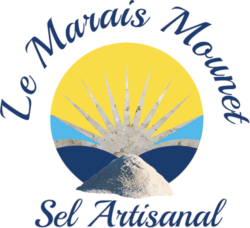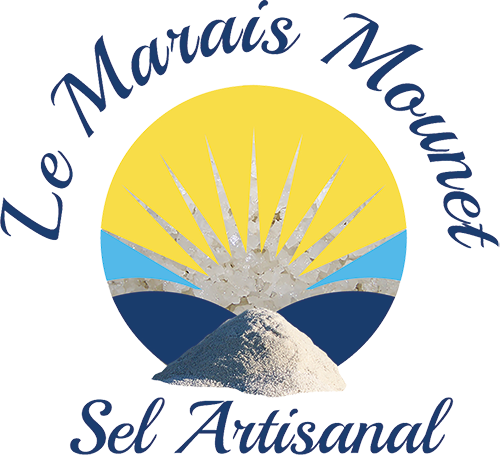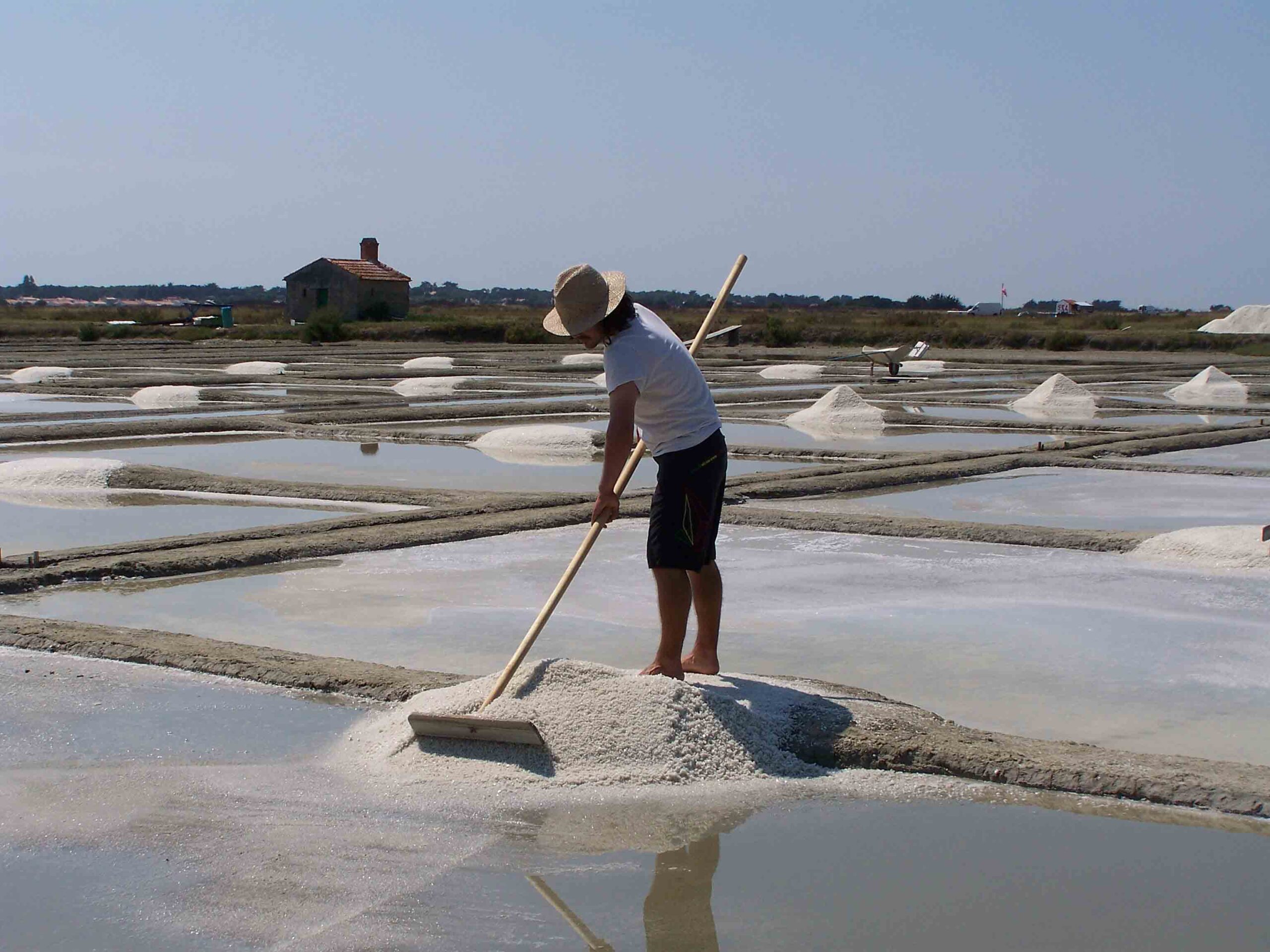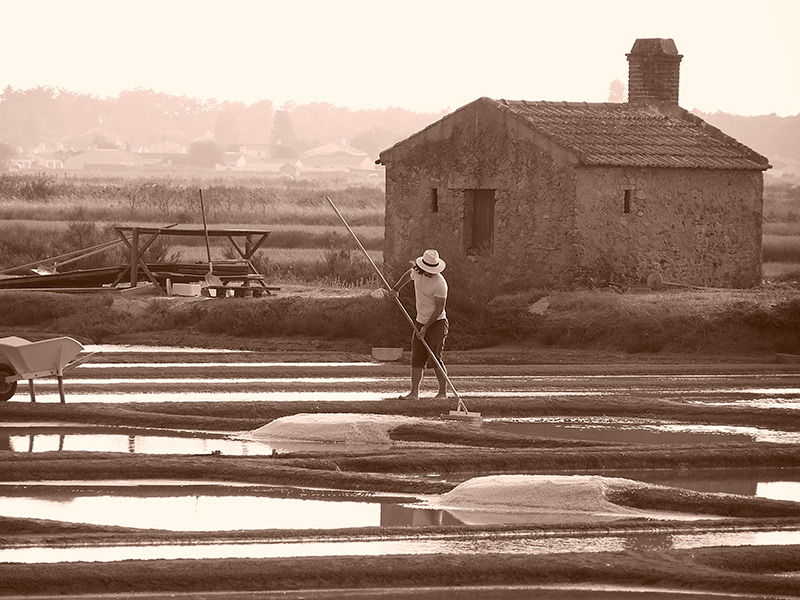Origin
Noirmoutier Island and the salt marshes
The salt marshes first appeared on the island of Noirmoutier in the Middle Ages, following titanic work carried out by the peasants. At that time, salt was essential for food but also for the preservation of food, its marketing by waterway extended over the territory through rivers, and as far as the Baltic Sea. Artisanal salt was so necessary and so precious that it was called white gold.
Today’s Sauniers are the heirs of more than a thousand years of history and tradition.
Le Marais Mounet
We are a couple of artisanal sea salt producers on the island of Noirmoutier, in Vendée. We work independently for the marketing of our harvest. Our salt marsh includes 40 harvesting ponds, called “oeillet”. It is in these « œillets » that we will collect on average 40 tonnes of coarse salt and 2 tonnes of fleur de sel. During the summer season, we are fortunate to be able to share our passion with 2 seasonal workers who will help us with packaging, harvesting and welcoming the public.
The coarse salt and the fleur de sel from the Marais Mounet are harvested manually and carefully by the salt maker.
Our Vision
Our Mission
Through short-circuit sales, we want to make the wealth of artisanal salt accessible to as many people as possible, while guaranteeing remuneration that allows producers to make a decent living from their trade.




